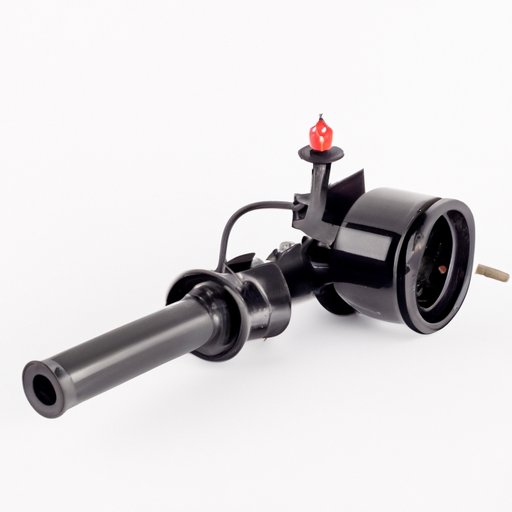Introduction
Starting a Troy-Bilt weed eater can be a frustrating experience, especially if you’re new to the task. It’s not uncommon for users to encounter problems while trying to start the tool. But don’t worry, because in this article, we will provide you with 5 easy steps to successfully start your Troy-Bilt weed eater.
Step 1: Filling the tank with fuel
The first step to starting your Troy-Bilt weed eater is to ensure that it has a full tank of fuel. Without enough fuel, your weed eater won’t start. It’s important to measure the fuel-to-oil ratio accurately. Most weed eater brands, including Troy-Bilt, recommend a 40:1 ratio, which means 3.2 ounces of oil for every gallon of gas, or a 50:1 ratio, which means 2.6 ounces of oil for every gallon of gas.
When filling up the tank, make sure to avoid spilling any fuel. Fuel spills can ruin your lawn, and can also be a safety hazard. Use a funnel while filling up the tank to avoid any fuel spills.
Step 2: Turning on the ignition
The second step to starting your Troy-Bilt weed eater is to turn on the ignition switch. The ignition switch is the tool’s starter, and it is usually located near the back of the engine. Turn the ignition switch on by flipping the switch to the ON position.
Some Troy-Bilt models may have an additional ON/OFF button on the handle that you need to press before turning on the ignition. Make sure to locate this button and press it before turning on the ignition switch.
Step 3: Priming the engine
Priming the engine means to fill the fuel lines, which makes the starting process smoother and faster. On Troy-Bilt weed eaters, there is usually a primer bulb that you need to pump to prime the engine. Pump the bulb between 5 to 7 times, until you notice the fuel flowing into the bulb. Priming the engine is an important step, especially if you have not used the weed eater for a while.
Step 4: Adjusting the choke
Adjusting the choke on your Troy-Bilt weed eater is essential for starting. The choke helps increase the fuel supply to the engine while the choke lever is closed, making it easier for the engine to fire up. Locate the choke lever, which is usually located near the back of the engine near the air filter. Close the choke and pull the starter cord about five times to prime the engine with gas.
After priming, move the choke lever to the open position. This allows more air to enter the engine, which is necessary for it to continue running. Don’t forget to adjust the choke properly, or else the engine won’t start.
Step 5: Pulling the starter cord
Finally, you can pull the starter cord to start the engine. Before pulling the cord, make sure that you have done the previous steps correctly. Hold the weed eater by the handle with one hand while pulling the cord with the other hand. Pull the cord quickly and firmly. Be careful not to pull the cord too hard that you will damage the engine.
If the engine doesn’t start after a few pulls, repeat steps 3 to 5, checking that you have primed the engine and adjusted the choke lever correctly.
Conclusion
You have just learned the 5 easy steps to start your Troy-Bilt weed eater! Remember, before starting your weed eater, make sure to measure the fuel-to-oil ratio accurately, fill up the tank with fuel, and prime the engine. Adjust the choke lever correctly, and finally, pull the starter cord to start the engine.
For maintaining the tool, make sure to remove dirt and debris from it regularly. Additionally, store the weed eater in a cool and dry place when not in use, and ensure that it is clean and fully fueled before storing.
Don’t be discouraged if your weed eater doesn’t start on the first try. Keep trying and follow the steps carefully. Once you get the hang of it, starting your weed eater will be a breeze.
(Note: Is this article not meeting your expectations? Do you have knowledge or insights to share? Unlock new opportunities and expand your reach by joining our authors team. Click Registration to join us and share your expertise with our readers.)
